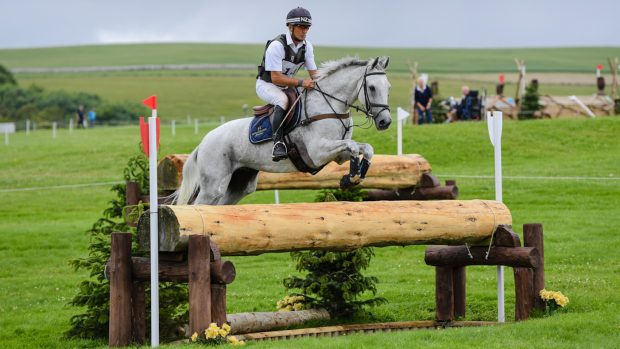How does eventing dressage scoring work? Here is Horse & Hound’s essential guide to help you understand how the judges and scorers award and calculate the marks and penalties…
Firstly, it’s important to understand that eventing is administrated at both national and international level. In Britain, national classes come under the auspices of British Eventing (BE) while all international classes worldwide are run under FEI rules. Broadly speaking, eventing dressage scoring is done in the same way under both BE and FEI rules, but there are a few differences.
Marks for each movement
In the eventing dressage phase, the combination of horse and rider perform a set test and the judge or judges mark each movement out of 10; occasionally a movement is worth double marks. Judges use whole marks and half marks when scoring a test.
Judges also give “collectives” at the end of the test. In BE tests, there are 10 marks available for each collective – paces, impulsion, submission and rider. In FEI tests, there is just one collective, for harmony of athlete and horse, and this is worth double marks.
The total number of marks available varies according to the test level – BE test are scored out of 200 to 280, depending on the level, while there are between 210 and 300 marks available in FEI tests.
Marks are deducted for errors of course and various other infringements.
Number of judges for eventing dressage scoring
From BE90 to intermediate level, there is one judge for the dressage phase. At advanced intermediate and advanced level there are usually two judges, although occasionally BE may give permission for just one judge to adjudicate on a class. FEI one-star competitions and short format classes at any level can be judged by two or three judges. Two- and three-star long format events can also have two or three judges, but there must be three judges at long format four- and five-star competitions.
It is worth noting that at BE events, the dressage judges simply judge the dressage. In FEI events, the dressage judging is done by the “ground jury”, who have responsibility throughout all phases of the competition, working with other officials as appropriate on aspects such as passing or failing horses at the trot-ups, assessing if courses are at the right level and making sure penalties are correctly awarded in the showjumping and cross-country phases.
How the marks turn into penalties
Once the judges have given their marks to a rider and horse combination, they will be added up to give a total for that test.
The total is turned into a percentage – so for example, if the pair score 130 out of 200, their percentage is 65%. The penalty score is calculated by taking the percentage away from 100, so a pair who scored 65% have a penalty score of 35. Higher percentages turn into lower penalty marks, so the lower the final score, the better the performance in eventing dressage scoring.
If there is more than one judge, the final score is an average of their marks.
Eventing dressage scores are presented to one decimal place on the final results; there are detailed rules about how many decimal places are taken forward at each stage of the calculation.
History of eventing dressage scoring: the coefficient
FEI eventing dressage scoring used to involve a coefficient, which made calculating the scores a little more complicated and had the overall effect of spreading the dressage scores out more, so making the dressage more influential in comparison to the other phases. The scoring system was changed in 2018 to remove the coefficient.
You might also be interested in:

Horse & Hound’s essential guide to eventing penalties

Everything you need to know about eventing at the Olympics

Horse & Hound’s useful guide to eventing’s levels in Britain
If you're new to eventing, we have demystified the levels available both in the UK and internationally ahead of this

The British Eventing points system: how it works
Here we explain the eventing points system to help you get your head around it...

Subscribe to Horse & Hound magazine today – and enjoy unlimited website access all year round
Horse & Hound magazine, out every Thursday, is packed with all the latest news and reports, as well as interviews, specials, nostalgia, vet and training advice. Find how you can enjoy the magazine delivered to your door every week, plus options to upgrade your subscription to access our online service that brings you breaking news and reports as well as other benefits.





